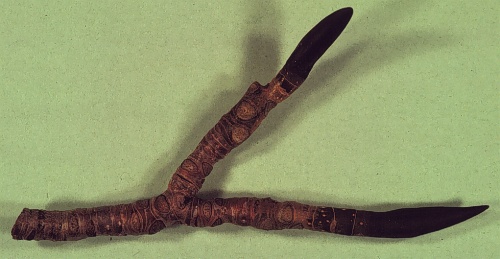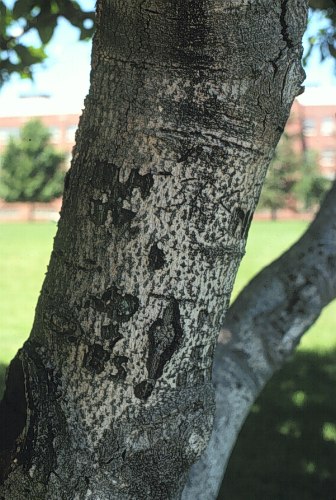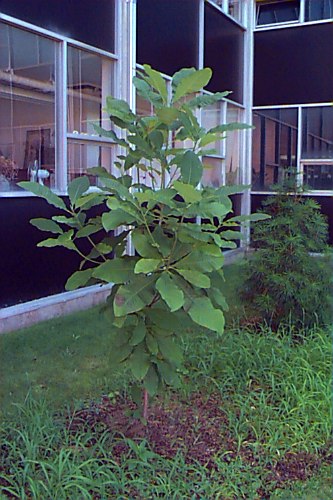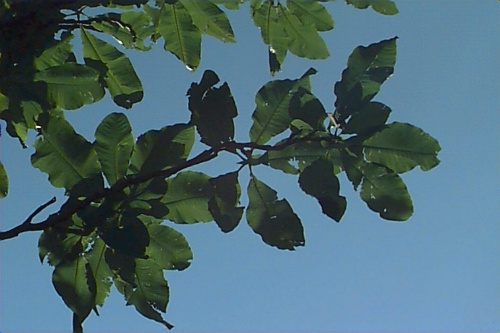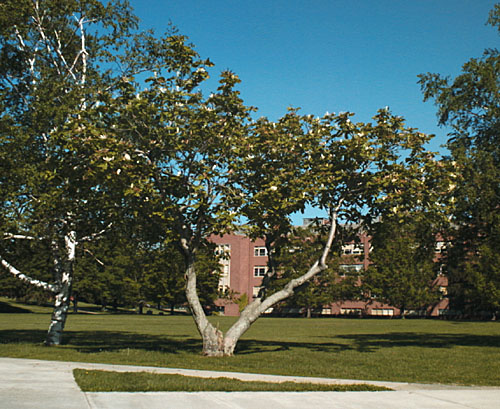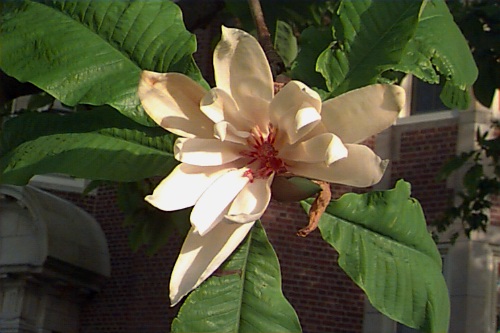Magnolia tripetala
Umbrella Magnolia
Magnoliaceae
ExpandHabitat
- native to the southeastern and south central United States
- zone 5
- especially common on the slopes of the Appalachian Mountains
Habit and Form
- a deciduous small to medium-sized tree
- grows to 15' to 30' tall
- very coarse texture and branching
- upright spreading to irregular branching
- loose and open
Summer Foliage
- leaves are 1' to 2' long
- leaves are widest three quarters of the way out the leaf
- leaves are bright, lime green above and somewhat frosty-looking underneath
- foliage is clustered at the branch tips
Autumn Foliage
- not impressive
- foliage may turn yellow and brown before dropping
Flowers
- not especially showy for a magnolia
- typically the flowers have 6 to 9 tepals
- each flower is 6" to 10" across when open
- color is creamy white
- fragrance is disagreeable
- bloom time is May and early June
Fruit
- aggregate fruits have a knobby appearance
- mature color is red and green
- fruit mature and open in September to October
Bark
- highly ornamental
- bark is smooth with ash-gray color
Culture
- prefers moist, rich, organic soils
- full sun or light, partial shade
Landscape Use
- as a specimen
Liabilities
- extremely coarse appearance is hard to use in most landscape situations
- large leaves can be injured by wind and hail
ID Features
- very large leaves for a magnolia or any native tree
- ash-gray, smooth bark
- coarse texture
- large, unpleasantly-scented, creamy white flowers
Propagation
- by seed
Cultivars/Varieties
- none
